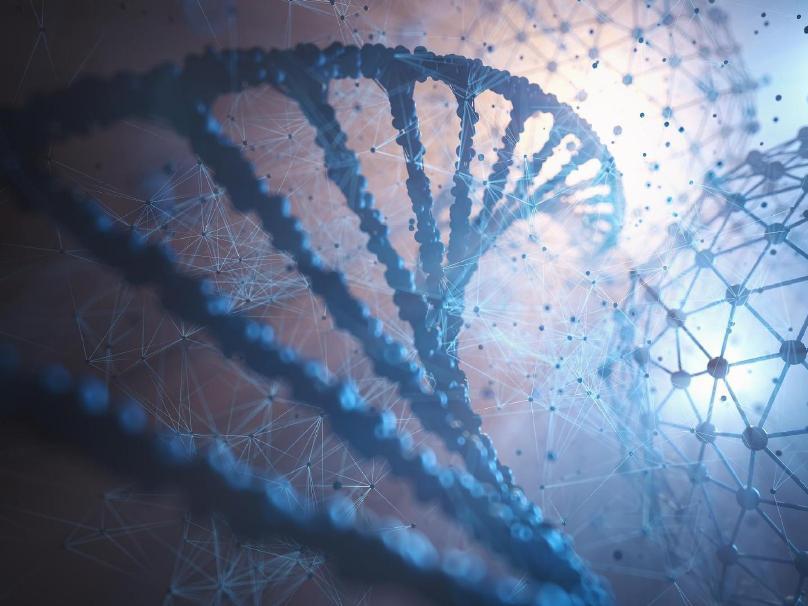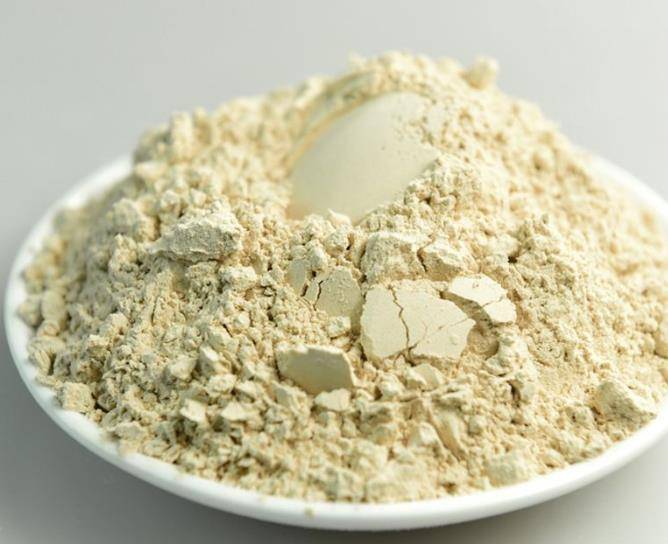希少なギンセノシドrg1 rb1 rg3の研究
Ginsenosides はのclass のsteroid compounds that are triterpene glycosides でthe field のnatural products. They are mainly derived from 三人参plants とare widely used でhealth products, functional foods, medicine, cosmetics とother fields due にtheir unique biological activity and medicinal value. It is generally believed that ginsenosideshave structural characteristics such as のrelatively high molecular weight, a low lipophilicity coefficient, and a large topological polar surface area.
彼らは低バイオアベイラビリティーされ、口頭で摂取、が伴わなければならない代謝されに年消化管に膓植物などの2次ginsenosides前にRg3・Rh2なるとは直ちに血液に吸収されて活跃できる物質が自分たちの薬効を発揮。研究が進むにつれて、後の高麗人参を発見しsaponinsを使ってる物理に扱われると化学、生物変換方法、砂糖ののチェーン変性あるいはC-17機側チェーン変え生成二次saponinsことがあるものや、低い金額さらに存在人参います希少な高麗人参サポニンは、従来の高麗人参よりも抗腫瘍作用[1]、肝保護作用[2]、神経系保護作用[3]などの薬理活性が高く、今後の発展が期待される。

現在、希少な高麗人参サポニンの研究の基准であるギンセノシドrg3は、新しいタイプの伝統的な漢方薬単体抗がん剤、「高麗人参カプセル」に開発されています;ギンセノシドrh2やc-kのようないくつかの珍しいギンセノシド単量体は臨床試験に入っている;一連の漢方薬エキスは、銀塩体rg3、rh2を豊富に含んでおり、高麗人参カプセルなどの健康食品の原料として広く使用され、市場から好評を得ている。
しかし、希少なギンセノシドは天然植物中では少なく、特に単純な原料から合成することが難しく、市場の需要に応えるには程遠い。そのため、近年、希少な銀瀬添の入手方法が話題となっている。本論文では、レアギンセノシドの構造とその変換経路・変換方法をまとめて分析し、レアギンセノシドのさらなる開発・応用に向けた科学的基盤と理論的基盤を提供する。
1珍しいギンセノシドの紹介
最初に発見された珍しいギンセノシドは、体内でのプロトパナキサジオールのギンセノシドの変換または代謝後に得られる生成物である。このような形質転換や代謝過程をでvivoで安定的かつ制御することは一般的に困難であるため、研究者たちはin vitro研究に注目してきました。1980年、kim bong-seopら[4]は、初めて酵素法を用いて希少なギンセノシドrh2を調製した。その後、希少なギンセノシドrg3の酵素変換において次々とブレークスルーが得られ、大規模な工業生産が達成された。
Therefore, ginsenosides Rh2and Rg3 are known as the first generatiにのrare ginsenosides. Based on pharmacological activity and mechanism のactイオンstudies, ginsenosides Rh2 and Rg3 have been developed into drugs and health products with anti-tumor functions. With the progress のmodern industrial 生産technology, rare 人参saponins have also ente赤いthe second generation. のindustrialized mass production of ginseng saponins such as Rk2 and Rh3, represented by C-17 side chain polyunsaturated structures, is a landmark achievement. This has led to the widespread use of products with rare ginseng saponins as signature ingredients in pharmaceuticals, health foods, cosmeceuticals and other fields. Compared with the first generation of rare ginsenosides, the second generation of rare ginsenosides has more significant biological activities such as anti-tumor activity, as well as a more reasonable lipophilicity-hydrophilicity coefficient and a smaller relative molecular mass, as shown in Table 1, which also makes their bioavailability better.
代表的な高麗人参サポニンと、その原型となる高麗人参サポニンとの変換関係から、現在発見されている高麗人参サポニン(例えば、図1)の親核構造を見ることができるギンセノシドrg3、rh2、rh1など。すべてのダムマラン型四環式トリテルペノイドであり、それらは分割することができますか プロトパナキサジオール(ppd)型、プロトパナキサトリオール(ppt)型、c-17側鎖複重結合型に変換する3[5]。通常高濃度で見られるプロトパナキサジオールと比較して、2つの構造の違いは、主にダンマラン骨格のc-3、c-6、c-20の分岐鎖に結合する糖鎖の種類と数である。したがって、4環式トリテルペンであるダンマランの分岐鎖に結合する糖鎖を変化させることで、希少なギンセノシドを得ることができる[6]。
「minor ginsenoside」、「rare ginsenoside」、「ginsenosiderg3」、「ginsenosiderh2」などの検索用語を使用して、cnki、china biomedical literature database (cbm)、web of science、pubmed、embase、china patent publication and announcement query system、yaozhi.comのデータベースを検索します。ギンセノシドrg3、rh1、rh2、c-k、f2、ノトギンセノシドr2が分類されている。その化学構造と薬理作用を図2と表2に示す。
希少なギンセノシドの2つの源泉と仕込みルート
2.1筋
Rare ginsenosides can be obtained by converting or heterologous synthesizing prototypical ginsenosides. At present, the prototypical ginsenosides that have been studied more in the conversion pathway mainly include ginsenosides Rb1, Re, Rc, Rd, etc. These ingredients are mainly derived からthe roots, leaves, flowers and flower buds of Panax ginseng C. A. Mey. のgenus Panax, the roots and leaves of P. quinquefolium L., and the roots and leaves of P. 三七花(Burk.) F. H. Chen. Due to factors such as the supply of plant materials, extraction and processing, marketprices, etc., this source has a high degree of dependence on the demand ためprotopanaxadiolginsenosides.
源への依存性を減らすために、希少なギンセノシドは、源となる化合物や中間体から始めて、様々な重要な酵素の異種合成によって合成することもできる。この手法には、図3に示すように、メチル乳酸の合成、2,3-オキソ-スクアレンの合成、環化反応などのプロセスが含まれる。この過程に関与する元化合物または中間体(2,3-オキソ-スクアレン、環化生成物ppt、ppdなど)はすべて希少なギンセノシドの重要な供給源である。複素環式合成反応の完了後、標的となるギンセノシドは遺伝子工学によって水酸化されるかグリコシル化されなければならない。
2.2準備ルート
現時点では、主な方法preparing rare ginsenosides using the prototypical ginsenosideconversion method are physical, chemical and biological methods. Physical methods include pyrolysis, chemical methods include acid degradation and base degradation, and biological methods include in 体外enzyme degradation, biotransformation and biosynthesis.
2.2.1熱分解し
熱分解は、プロトパナキサジオールのギンセノシドの糖鎖とc-17側鎖を高温処理によって分解し、希少なギンセノシドに変換する。sun baishenら[74]は、9回蒸して空気にさらす方法で処理された黒参から希少なジンセノドrg6、rs4、rs5を得た。[75] qu wenjiaらは、ginsenosides 20(s)- rg3、20(r)- rg3、rk1、およびrk5を得た。guan dapingら[76]は、高麗人参の茎や葉を高温加熱することによって、希少なジンセノシドrk1とrg5を得た。[61]高麗人参の葉からジンセノシドreを単離して精製し、120°cで6時間処理したところ、図4に示すように希少なジンセノシドrh1とrh4になった。

熱分解法の利点は、簡便で低コストであることです。しかし、時間がかかり、あまり具体的ではなく、変換率が低いため、原材料を有効に使用しないと資源の無駄につながる可能性があります。
2.2.2酸分解法
適切な酸性条件下では、ギンセノシドの糖鎖の一部が加水分解されて希少なギンセノシドが形成される。liu qianら[77]は、弱い酸性条件下では、ギンセノシドの糖鎖の一部または全部が加水分解されるが、弱い酸性条件下ではc-20の位置の配置が変化し、最終的には2つのジアステリオ異性体の混合物が得られることを発見した。gao dら[59]は、クエン酸を用いて高麗人参の芽を加熱処理し、図5に示すように、高麗人参の花芽中のギンセノシドrb1を希少なギンセノシドrg5およびrk1に変換した。li wら[78]はクエン酸を用いてギンセノシドreを加水分解し、まれなギンセノシドf4およびrk3にした(図6参照)。
ギンセノシドの酸分解条件はbae e aら[79]にまとめられている。実験の結果、一般的なギンセノシドをメタノール中で5%の塩酸、エタノール中で5%の硫酸で4 - 6時間加水分解した後、ギンセノシドrh2をエーテルで抽出することができた。ジンセノシドの糖鎖が加水分解されアグリコンが破壊されるだけでなく、側鎖も環化されたり、20番目の炭素原子の配置が変化したりするため、20(s)-プロトパナキサジオールやトリオール型サポニンを得ることが困難になる。現在、胃液を模擬した酸性度を利用してこれらの現象を軽減することができる。一般的に使用される酸には、酒石酸、ギ酸、酢酸、クエン酸などがあります。珍しい高麗人参サポニンを調製するための酸分解の全体的なプロセスは面倒であり、多くの副生成物があります。そのため、効率的な酸分解法の検討を継続する必要があります。
2.2.3アルカリ分解法
Compared with acid degradation, in an alkaline environment formed by reagents such as sodium hydroxide and sodium methoxide, the C-17 side chain of ginsenosides changes less, and the alkali degradation method has fewer side reactions, mild degradation conditions, and easy purification のproduct. Chen Yanping etアル[80] found that under mild alkaline conditions, protopanaxatriol can be degraded to obtain the rare ginsenoside Rhl, and protopanaxadiol can be degraded to obtain the rare ginsenoside Rh2.
アルカリ分解法の欠点は、酸触媒法に比べて反応時間が長く、収率が低いことです。
2.2.4 in vitro酵素分解法
in vitro酵素分解(in vitro enzymatic degradation)は、基質のプロトタイプであるギンセノシドのグリコシド結合を酵素を用いて分解する方法である。酵素分解は、酸性分解やアルカリ性分解と比較して、効率が高く、汚染や特異性がないという利点があり、現在最も広く用いられている研究方法です。異なる種類の酵素を使って、異なる種類や立体構造のグリコシド結合を修飾することができる。金東植(キム・ドンシク)控えめ趙し(81)が(82)ソル・驪州[83]他確實使ってprotopanaxadiol-type saponins基板とβ-glucosidase biocatalyst、ginsenosides Rh2、Rg3、Rh3、など他の副産物Rg5、protopanaxadiol-type saponins。遺伝子工学の発達に伴い、細菌の遺伝子をクローニングして発現させたグリコシダーゼが高麗人参のサポニンの形質転換にも用いられるようになった。zheng fらは、エンドグルカナーゼを用いてギンセノシドrb2、rb1、rc、rdのc2のグルコースを切断したが、中にはそれぞれ高い選択性を示すものもあり、これらは薬理活性がより強い。

酵素分解法では、基質の原型であるギンセノシドを完全に溶解するために、リン酸緩衝液または少量の有機溶媒を含む溶液がしばしば用いられる。従来の溶液は酵素の活性に影響を与えるだけでなく、基質への溶解度も低かった。これに対して、fan yuruらは、低共晶溶媒(深共晶溶媒、des)を用いた酵素補助法を開発した[85]。塩化コリンとプロピレングリコールを用いてdesを調製し、その中に基質のギンセノシドrb1を溶解させ、カタツムリ酵素を用いて酵素変換を行い、まれなギンセノシドc-kを得る。
この方法で使用されるdesは基質プロトサポニンの溶解度を増加させるだけでなく、酵素の活性を増加させ、それによって希少なギンセノシドc-kの収率を効果的に増加させる。しかし、従来の生体酵素分解法やdes-assisted enzyme法では、生成物と酵素を効率的に分離できないという欠点がありました。のカギを握っているこれまでのしたがって、のアプリケーション研究をタンパクプロダクトオブザ酵素試写ginsenosidesはの特定の及び高効率な酵素を依存して、解決策媒体の連続最適化に必要な酵素反応探査方法など効率よく酵素製品を分離するためにすればさらに効率的かつenergy-savingly工業的に珍しいginsenosidesを生成する。
2.2.5微生物変換法
The microbial transformation method mainly uses microorganisms to specifically hydrolyze ginsenosides to obtain rare ginsenosides through the decomposition of one or more enzymes[86]. SIDDIQ私MZ etal.[87] used a mixture of ginsenosides Rb1, Rb2, Rb3, Rc, and Rd, a mixture of ginsenosides, was first obtained by biotransformation technology to obtain a mixture of ginsenosides Rg3, and further conversion can obtain rare ginsenosides Rk1, Rk2, Rg5, and Rh3, as shown in Figure 7. FU Yetアル[58] isolated endophytic bacteria からginseng that convert ginsenoside Rb1 to rare ginsenoside Rg3, see Figure 8. HASEGAWA H etアル[88-89] studied the specific transformation pathway of rare ginsenoside C-K by intestinal flora and speculated that rare ginsenoside C-K is the form of protopanaxadiol ginsenoside that is most likely to be absorbed through the intestine, see Figure 9.
guo ypらは、無菌ラットモデルを用いて、ラットの腸内微生物叢を介してパナソシドがrh2などの希少なギンセノシドに代謝されることを検証した[90]。kim kaら[91]は、ギンセノシドrb1を希少なギンセノシドc-kに変換できるバクテロイデス属、ビフィズス菌、およびルミノコッサ属を分離した。物理的および化学的変換法と比較して、バイオ変換法は、高効率、穏やかな反応条件、低コスト、ギンセノシド活性のより良い保証というユニークな利点を有する。しかし、バイオ変換にはギンセノシドを基質とする必要があり、人参だけを原料とするには限界がある。そのため、希少なギンセノシドを得るためには、植物組織培養バイオリアクター技術などの新技術を継続的に探索・開発する必要があります。
2.2.6バイオリアクター技術
With the development of biotechnology, the efficient large-scale production of rare ginsenosides using cells and organelles as raw materials has gradually replaced the existing conversion method that requires ginsenosides as substrates. Cells and adventitious roots are cultured in large bioreactors and the accumulation of biomass and ginsenosides is enhanced in a corresponding manner. CAO L etアル[92] induced adventitious roots in a 5 L bioreactor and produced 11 rare ginsenosides, including ginsenoside Rh2. The bioreactor was associated with enzymatic hydrolysis using six β-glycosidases and their combinations, yields 54.32~66.00 mg·L-1 . Further optimization of pH and temperature, immobilization of BglPm and Bgp2, and the yield of ginsenoside Rh7 was further increased by 1%, with a maximum yield of 51.17 mg·L-1 (17.06% of the original ginsenoside mixture). The above method can replace the direct conversion and extraction of rare ginsenosides from Panax plants and can also be used to supplement 酵母cell factories.
2.2.7 Biosynthetic方法
近年、合成生物学の研究の継続的な発展に伴い、動物や植物由来の化合物も微生物によって合成することができます。微生物de novo珍しいギンセノシドの異種合成の方法は生合成法と呼ばれ、異種合成法としても知られています。生合成法では、メチロキシピバー酸経路によって生成されるイソペンテニル二リン酸が、様々な酵素の作用によりギンセノシドの前駆物質スクアレンを形成するためにしばしば用いられる。スクアレンモノオキシゲナーゼは、重要な原料である2,3-オキシドスクァレンを生成するために使用され、次にダマレネジオール合成酵素の助けを借りてダマレネジオールを形成し、ギンセノシド骨格を形成する。そして遺伝子工学技術を用いてヒドロキシ酸やグリコシル酸を合成し、標的となるギンセノシドを形成する。この方法には多くの重要な律速酵素が含まれている。これらの重要な速度制限酵素の遺伝子を遺伝子工学的および代謝工学的に改変すると、収量が大幅に増加する。lei jun[93]は、タバコ中で4段階の酵素反応を人工的に構築し、図4gに示すように、タバコ中で初めてギンセノシドf1の異種合成に成功した。
saccharomyces cerevisiaeは食品グレード株であり、低レベルの単一細胞真核生物である。多くの天然テルペン化合物は、主要な酵素遺伝子を導入することにより、異種の合成経路を構築することで、saccharomyces cerevisiaeで合成することができる。陳[94]増加における鍵遺伝子UGTPn3表現タバコの合成を植物性ホルモンのように推進することによって、セルginsenoside Rh2、達する可能性が、収量38.67μg・てろ助け。過剰発現したとき壮Yら[95]PGK1の下に加遺伝子に興行側HXT7 PGM1 UGP1、UGT51を与える具体的にはブドウ糖moietyへの移転C-3-OH PPD付加価値をつけるginsenoside Rh2、収穫のginsenoside Rh2は36.7歳80 mg・L-1換算率+ 4%増加した。
li xらは、pgugt2a71、pgugt54q94、udp-キシロース生合成経路をpptシャーシに導入し、操作酵母を構築したところ、それぞれ1.62 g・l-1のnoto参サポニンr1と1.25 g・l-1のnoto参サポニンr2が得られた[96]。zhao f lら[97]は、3つのコピーを持つ融合遺伝子pg ppds-atr1をsaccharomyces cerevisiaeのゲノムに組み込んだ。この結果、dmの96.8%がppdに変換され、1436.6 mg・l-1が得られ、操作された酵母は活性酸素種の影響を受けなかった。ノ氏Wenyuらは[98]好適なglycosyltransferase転任GTK1ジーンと好適なglycosyltransferase UGT1 Saccharomyces cerevisiaeに遺伝子、protopanaxadiolを生産するPPD、と過剰な投与phosphoglucomutase PGM1玄慧UDP-glucose pyrophosphorylase UGP1遺伝子44.83 mgのginsenoside F2収益を得る・L-1。
生合成技術により開発に成功したレア・ギンセノシド合成法は、従来の低い生物変換効率の問題を解決し、レア・ギンセノシドの大量生産における大きな限界を突破した。しかし、ギンセノシドの異種発現系およびde novo合成経路を構築する鍵は、合成経路の最適化、競合経路の阻害、酵素修飾、転写調節因子およびその他の関連する酵素遺伝子にある。そのためには、合成生物学技術だけでなく、ゲノミクス、トランスクリプトミクス、プロテオミクスなどのオミクス技術の開発が必要です。より正確で効果的な規制を実現するためには、さらなる研究が必要です。
3希少なギンセノサイド産業の現状分析
希少なギンセノシドは、プロトタイプのギンセノシドよりも高い生物学的利用能と強い生物活性を有することから、医薬品、健康食品、化粧品などの分野での応用研究が大幅に進展し、開発と応用の展望が広がっている[99]。ここ10年間、珍しい高麗人参サポニンを配合した薬品と健康用品が盛んに販売されている。現在、市販されている珍しい高麗人参サポニンが含まれた薬品には、申一カプセル、20(s)—ギンセノシドrg3眼軟膏、20(s)—ギンセノシドrg3注射剤、金星カプセル、神百儀カプセルなどがある。統計によると、図11に示すように、過去20年間に、希少なギンセノサイズに関する84の国家発明特許があった。その中には、この10年間に76件もの関連特許があり、主に調製および加工方法、希少なギンセノサイドモノマー適合製品、抗がん剤、抗腫瘍剤などの応用に焦点を当てている。比較すると、発明特許の数は販売された製品の数をはるかに上回っている。

これは、従来の研究開発技術や産業用生産設備への対応の限界から、歩留まりを大幅に向上させる調製方法が確立されておらず、工業化生産が妨げられ、製品開発が制限されているためと考えられます。統計によると、ここ数年、珍しい高麗人参サポニン製品の売上高は2017年の4億600万元から2022年には7億3900万元に増加し、年平均12.7%の複合成長率を示している。2027年にはさらに増加し、年間成長率は16.1%で、1561億元になると予想されています。希少なギンセノシドの人気が高まっていることが見て取れ、市場価値は非常に高い。関連産業は中国でも有望な産業となっている。ある程度、業界は、医療産業の発展を促進し、いくつかの病気の発生率を減らすことができます。希少なギンセノシド産業の発展を加速することは、中国の健全な発展に重大かつ広範囲な影響を与えるでしょう#39; s産業だ。
4まとめと展望
希少なギンセノシドは、原型ギンセノシドよりも薬理活性が強く、人体に容易に吸収される。現在、希少なギンセノシドの研究の多くは、その薬効の開発に焦点を当てているが、その変換・分離・精製に関する実験的研究も開発・評価の上で大きな意義を持つ。希少なギンセノシドの変換や分離には多くの方法があるが、それぞれに長所と短所がある。希少なギンセノシドを高濃度に保つためには、合理的な製法が鍵となります。その中でも、バイオ変換法や生合成法は効率が高く、副生成物が少なく、目標が明確であることが好まれています。
しかし、生合成法と比較すると、プロトタイプのギンセノシドが基質となっていなければ生体変換法は成立せず、酵素依存性のために多くの要因に影響される。近年、新たに開発された生合成法は、真核生物や原核生物において単純な基礎代謝経路のみを必要とするギンセノシドのプロトタイプ合成から始まっている。しかし、遺伝子情報鍵酵素を代謝経路は、まだ十分に、取得されていないため、今後、、努力ひょっとすると集中力開発効率的かもしれないグリーン経済・安全標準化された生4つの条件で、より多くの希少ginsenosidesを工業的に製造に受け入れることができそれによって産業化を実現する珍しいginsenosidesしていた。マルチオミックスとバイオインフォマティクスの開発を組み合わせることで、関連する基礎代謝経路の主要な酵素遺伝子の情報をより深く掘り下げ、産業生産を向上させ、市場の需要を満たすことができ、人間の製薬産業と健康に大きな貢献をすることができます。
参考:
[1] wang c z, xie j t, fishbein a, etal。ヒトの大腸がん細胞sw480に対するノトネニンジンの異なる植物部位の抗増殖作用[j]。^アポロドーロス、2009年、23 - 23頁。
[2] lee h u, bae e a, han m j, etal。ギンセノシドrbの肝保護効果1 そして、tert-ブチルヒドロペルオキシド誘発性肝障害のk化合物[j]。^ a b c d e f g h i(2005)、105頁。
[3] tian j w, fu f h, geng m y, etal。20(s)-ギンセノシドrg3の神経保護効果 ラットの脳虚血を調べました [J]。2005年Neurosci Lett、374(2):92。
【4】金鳳燮、禹洪善、趙麗亜。酵素法による希少なギンセノシドの生成と生成物組成の分析[j]。^『仙台市史』仙台市史編纂委員会、2002年(平成14年)12月21日。
[5] li bing, zhang chuanbo, song kai, etal。希少ギンセノシドの生合成に関する研究[j]。中国の生物工学ジャーナル,2021,41(6):71。
[6] guo congliang, cui xiuming, yang xiaoyan, etal。ギンセノシドの生物学的変換の研究。中国伝統医学ジャーナル,2014,39(20):3899。
【7】 謝 J T, 王 C Z 張 B et アル で vitro and in volume vivo 抗がん 効果 of 米国 ginseng ベリー: 探検 代表的な化合物[j]。2009年Biol Pharmブル、32(9):1552年。
[8] 低酸素誘導因子1αおよびギンセノシドrgによる血管内皮増殖因子発現の阻害3 ヒト胃がん細胞で[j]。cancer res ther, 2019;15 (7): 1642.
[9] sun m y, song y n, zhang m, et al。Ginsenoside Rg3 arhgap9のタンパク質発現を増加させることにより、肝臓がん細胞の遊走および浸潤を阻害する[j]。^ a b c d e f g h i(2019年)、17頁。
[10] miao s, fu b j, zheng c, et al。Ginsenoside Rg3 ラットでは酸化ストレスや骨代謝の制御によりアルミニウムによる骨粗鬆症を減少させる[j]。2020 Biol Res Elem辿れば198:1
[11] kyong k, hye y k .韓国人参は孤立ラット膵島からのインスリン放出を刺激する[j]。^ j . ethnopharmacol, 2008, 120(2): 190。
[12] min s w, jung s h, cho k h, et al。紅参,crataegii fructusおよびそれらの主要成分ギンセノシドrg3の抗脂質効果 マウスのウルソル酸を調べました[j]。2008年Biomol人数、 364ページ16(4):た
[13] shiehp c, tsao c w, li j s, et al。β-アミロイドに対するギンセノシドrh 2の作用における下垂体アデニル酸シラーゼ活性化ポリペプチド(pacap)の役割-ラット脳アストロサイトの阻害を誘導[j]。^岩波文庫、2008年、434頁。
黄ます。[14] J T,金 ^ a b c d e f g h S et アルは肥満 効果 のginsenoside Rh2 are 関連付けられた 活性化 AMPKの 3 t3-l1脂肪細胞におけるシグナル伝達経路[j]。^「biochem bioph res co, 2007, 364(4): 1002」。biochem . 2010年3月4日閲覧。
【15位】牛 C Sいいよな? c h yeh m f et al.による脂肪形成の増加 ginsenoside (Rh2) in 3T3-L1 携帯を介して 活性化 グルココルチコイド受容体[j]。^ ab c d e f g h i f g h i(2009年)41頁。
[16] park e k, choo m k, kim e j, et al。ギンセノシドrh2の抗アレルギー活性 [J]。2003年Biol Pharmブル(1581 26(11):た。
[17] park j s, park e m, kim d h, et al。活性化ミクログリアにおける人参サポニンの抗炎症機構[j]。^ a b cアポロドーロス、2009年、209頁(1)。
[18] park j s, cho, j y .パナックス人参由来のギンセノシドの抗炎症作用とその構造類似体[j]。^ a b c d e f g h i日本コロムビアレコード、2009年、38 - 38頁。
[19] kim e y, shin k m, jang s, et al。[3 h] muscimolの変化 [3 h]フルニトラゼパムと[3 h] mk-801 7-ニトロインダゾールの長期室注入によってラットの脳に結合[j]。2004年Neurochem Res publica、29(12):2221を
[20] sunga c, tae w k, shivendra v . s . ginsenoside rh2媒介g 1 ヒト乳癌細胞における相細胞周期停止は、p15 ink4bおよびp27のkip1依存的なサイクリン依存性キナーゼの阻害によって引き起こされる[j]。^ a b c d e f g h i(2009年)26頁。
[21]柳J 清水k、yu h ら。 ギンセノシドrhの抗増殖作用におけるc-20のヒドロキシ基の立体特異性2 前立腺がん細胞を調べました[j]。^パウサニアス、2010年(平成22年)7月1日、82頁。
【22】高培信、劉勇、侯徳志抗がん剤におけるギンセノシドrg3とrh2の研究結果に関する簡単な議論[j]。^ a b c d e f g h i(2019年)、25 - 26頁。
[23] tode t, kikuchi y, kita t, et al。ギンセノシドrhの経口投与による阻害効果2 人間の成長に影響を与えています ヌードマウスの卵巣がん細胞[j]。^ a b c d e f g h i j j cancer res clin oncol, 1993, 120(1-2): 24。
[24] nakata h, kikuchi y, tode t, et al。ギンセノシドrh2の阻害作用 ヒト卵巣がん細胞をもつヌードマウスの腫瘍増殖について[j]。日本癌学会,1998,89(7):733。
[25] cho s h, chung k s, choi j h, et al。高麗人参サポニンの代謝物である化合物kは、hl-60ヒト白血病細胞においてカスパーゼ8依存性経路を介してアポトーシスを誘導する[j]。^アポロドーロス、2009年9月9日、49頁。
[26] han g c, ko s k, sung j h, et al。化合物kは、db/dbマウスでインスリン分泌を増強し、有益な代謝作用をもたらす [J]。^ j agric food chem, 2007, 55: 10641。
[27] park e k, shin y w, lee h u, et al。ギンセノシドrbの阻害効果1 noとプロスタグランジンe2上のk化合物raw264の生合成7リポ多糖によって誘導される細胞[j]。^ a b c d e f g h『仙台市史』、2005年、286頁。
[28] shin y w, bae e a, kim s s, et al。ギンセノシドrbの効果1 慢性オキサゾロンが誘発するマウス皮膚炎には、k化合物が使われた [J]。^アポロドーロス、2005年、5巻1183。
鄭[29] ^ a b c d e f g h、j j、j j SJ et 化合物kは、基本的な線維芽細胞成長因子誘発性を阻害する 血管新生規制経由 p38 mitogen活性化プロテインキナーゼとaktのヒト臍帯静脈内皮細胞 [J]。^パウサニアス、3巻9・9・9。
[30] kim s, kang b y, cho s y, et al。化合物kは形質転換されたヒトケラチノサイトでヒアルロン酸合成酵素2遺伝子の発現を誘導し、無毛マウス皮膚でヒアルロン酸を増加させる[j]。^『仙台市史』仙台市、2004年、348頁。
[31] igami k, shimojo y, ito h, et al。ラットにおける発酵高麗人参とその主成分化合物kの肝保護効果 パラセタモール(アセトアミノフェン)による肝障害のモデル[j]。^ a b cアポロドーロス、2015年、67頁。
[32] park j s, shin j a, jung j s, et al。マウスにおける活性化ミクログリアにおける化合物kの抗炎症機構とその神経保護作用[j]。2012年J Pharmacol Exp人数、341:59。
[33] han shengqiang, xie yuan, li fu, et al。高麗ニンジンf2は、pi3k / akt経路を介して3 t3 - l1脂肪細胞のインスリン抵抗性を改善する[j]。^ a b c de f g h『科学技術史』、2018年、38頁。
[34]周京です。肥満マウスにおけるギンセノシドf2の減量作用と腸内細菌叢への影響[d]。『漢書』新潮社、2018年。
[35] siraj f m, sathish k n, kim y j, et al。Ginsenoside F2 所蔵は肥満活动ステープル経由燃やす働きγ「脂肪をおさえる効果がつくる」という記憶区別3T3-L1部線か[J]。^ a b c d e f g hi j j enzyme inhib med chem, 2015, 30: 9。
[36] teng b, jiang j, zhao l, et al。Ginsenoside PPD's超解像イメージングによるmtorの下方制御を介した抗腫瘍効果[j]。^ a b c d e f g h i(2017年)、22頁。
[37] zhang b, zhou w j, gu c j, et al。ギンセノシドppdは、エストロゲン受容体を介した子宮内膜間質細胞オートファジーの阻害およびnk細胞の細胞毒性を抑制することにより、抗子宮内膜症効果を発揮する[j]。^ a b c d e f『官報』第2079号、大正8年、774頁。
[38] ding yanfen, li jiangxia, yang chongren。ギンセノシドrh1の薬理作用に関する研究[j]。^ a b c de f g h『日本近代史』第5巻第4号(2013年)、282頁。
[39] zhang c, li s, zhao r, et al。喘息モデルマウスにおける炎症因子の発現に対するギンセノシドrh1の阻害効果。中国病理生理学会誌,2018,34(1):163。
[40] hu y, wu l, jiang l, et al。Notoginsenoside R2 mir-27a / sox8 /-カテニン軸を介してa25-35誘導ニューロンのアポトーシスおよび炎症を減少させる[j]。^ a b cアポロドーロス、2018年4月30日、47頁。
[41]ハンjリーeキムe ら表皮の役割γδT-cell-derived interleukin 13 ギンセノシドfの美白効果1 [J]。^アポロドーロス、2014年(平成26年)11月23日。
[42] hou j, cui c, kim s, et al。Ginsenoside F1 astrocytic senescence-associated secretory phenotype [j]を抑制する。化学Biol 2018年、相互作用,283:75。
[43] qin m, luo y, lu s, et al。Ginsenoside F 1 ameliorates内皮細胞を通して、炎症反応負傷とアテローム性動脈硬化を防いでマウス平定A20-mediated NF -κBシグナリングか[J]。^アポロドーロス、2017年、8 - 9頁。
[44]葉安基、張在浩、成楽欽。ginsenoside rg5の研究進捗状況[j]。^『仙台市史』仙台市史編纂委員会、2011年(平成23年)12月12日。
[45] zhang jing, wang shirong, chen quancheng, et al。ギンセノシドrg3 (r)、rg3 (s)、およびrg5 / rklのマウスにおけるエタノール誘発性記憶障害の改善に対する影響[j]。^『金沢市史』学習院大学、2006年(平成18年)3月3日。
【46】趙相玉、何振玉、宰守峰。ギンセノシドrg5が胃がんの細胞周期と浸潤に及ぼす影響とメカニズム。中国応用生理学会誌,2020,36(1):51。
[47] liu y, fan d .ギンセノシドrg5の調製、乳がん細胞に対する抗腫瘍活性、およびpi3kの標的[j]。^パウサニアス、2巻12・12(1)。
[48] zhang d, wang a, feng j, et al。Ginsenoside Rg 5 ヒト食道癌細胞において、ホスホイノシチドを介してアポトーシスを誘導する 3キナーゼ/プロテインキナーゼbシグナル経路[j]。^『官報』第1919号、大正19年(1919年)4月19日。
[49] liang l d, he t, du t w, et al。Ginsenoside Rg 5 ヒト子宮頸がん細胞のアポトーシスとdna損傷を誘導する[j]。^ a b c d e f『官報』第2211号、大正15年(1926年)12月11日。
[50] kim e j, jung i h, le t k v, et al。Ginsenosides Rg5 とRh3 マウスにおけるスコポラミン誘発性記憶障害の保護[j]。^ j . ethnopharmacol, 2013, 146(1): 294。
[51] lee y, lee j s, jung j s, et al。ギンセノシドrg5の抗炎症作用 でlipopolysaccharide-stimulated BV2 microglial細胞 [J]。^ a b c d e f g h i(2013年)14(5)9820。
[52] shin y w, bae e a, kim d h . ginsenoside rgの阻害効果5 その代謝物ギンセノシドrh 3 オキサゾロン誘発マウス慢性皮膚炎モデル[j]。2006年アーチ製薬会社「Res publica、14年29(8):た。
[53] wei b, duan z g, zhu c h, et al。ギンセノシドrk3の抗貧血効果 とginsenoside Rh4 リバビリン誘発性貧血マウスを用いた実験[j]。^ a b c d e f g h e f g h 2018年(平成30年)4月9日閲覧。
[54] duan z g, wei b, deng j j, et al。ギンセノシドrh4の抗腫瘍効果 in vitroおよびin vivoでのmcf-7乳がん細胞における[j]。^「biochem bioph res co, 2018, 499(3): 482」。biochem . 2017年11月18日閲覧。
[55] baek s h, shin b k, kim n j, et al。ギンセノシドrkの保護効果3 とRh4 in vitroおよびin vivoにおけるシスプラチン誘発性急性腎障害について[j]。^ a b c d e f g h i『仙台市史』、2017年、41頁。
[56]神経系におけるginsenoside薬理学:イオンチャネルおよび受容体の調節への関与[j]。^パウサニアス、2014年5月5日、98頁。
[57]陳 B 申 Y P 張 D F et アル The apoptosis-inducing 効果 of ginsenoside F4 from 蒸し notoginseng on ヒトリンパ球腫jk細胞[j]。nat prod res, 2013, 27(24): 2351。
[58] fu y .ギンセノシドrbの生体内変換1 ジプシーxviiとマイナーギンセノシドrg3に 内生菌flavobacterium sp.によってge 32 panax高麗人参から単離された[j]。lett appl microbiol, 2019, 68: 134.
[59] gao d, kim j h, vinh l b, et al。高麗人参の花芽中の低極性ギンセノシド含有量に対するクエン酸と熱処理の効果[j]。^ a b c d e f g h『バイオハザード』、2018年、52 - 144頁。
[60] paik s, choe j h, choi g e, et al。rg 6は、まれなギンセノシドであり、インターロイキン-10およびマイクロrna -146aの誘導によって全身炎症を阻害する[j]。sci rep, 2019, 9:4342。
鄭[61] s y, kim j e, song g y, et al。黒チョウセンニンジン由来のまれなプロトパナキサトリオール型ギンセノシド分体は、p-stat-1およびnf-bを阻害することで炎症遺伝子inosを抑制する[j]。^ a b c d e f g hi『人事興信録』第48版、1091頁。
[62] cho k, song s b, tung n h, et al。抑制TNF -α-mediated NF -κB書き起こし活動をdammarane-type ginsenosidesの花芽蒸したりから人参入り三人参HepG2 SK-Hep1細胞をか[J]です^ a b cアポロドーロス、2014年(平成26年)1月22日。
[63]陳、ビン;佳、小浜。リンパ腫治療薬の調製におけるギンセノシドrg6の適用:cn103230406 [p]。2013-08-07。
[64] fan d ., huang r ., duan z ., et al。希少なギンセノシドrg6およびf4を含む睡眠改善剤組成:cn111358803b [p]。2021-05-07。
[65] yu q, zeng k w, ma x l, et al。Ginsenoside Rk 1 pro-inflammatory応答を抑える リポ多糖はjak2 / stat3経路を阻害することでraw264.7細胞を刺激した[j]。^ a b c d e f g hi j j, 2017, 15(10): 751。
[66] hu j n, xu x y, li w, et al。Ginsenoside Rk 1 炎症、酸化ストレス、ニトラインストレス、アポトーシスを阻害することにより、マウスのパラセタモル誘導肝毒性を改善する[j]。j ginseng res, 2019, 43(1): 10.
[67] hu m l, yang j, qu l l, et al。Ginsenoside Rkl 肺腺がんでnf-kb経路を標的とすることで、アポトーシスを誘導し、pd - l1の発現を低下させる[j]。食べ物やFunct 2020年、11(1):456。
[68] fan d ., dong y ., duan z ., et al。希少なギンセノシドrk2、ckおよびpptを含む抗腫瘍組成:cn111265536a [p]。2020-06-12。
[69] liu h h, zhao j q, fu r z, et al。のginsenoside Rk3 pi3k / akt / mtor経路の制御によりアポトーシスとオートファジーを仲介し、in vitroおよびin vivoで抗食道がん活性を発揮する[j]。plos one, 2019, 14(5): e0216759。
田[70] M 馬P 張 Y et アル Ginsenoside Rk3 緩和 潰瘍DSS-induced大腸炎 大腸炎を保護することで 結腸障壁 and nlrp3インフラマのいくつかの経路を阻害する[j]。^ a b cアポロドーロス、2018年、85 - 85頁。
[71] sun j, sun g, meng x, et al。Ginsenoside RK3 aktおよびmapk経路を介したh9c2心筋細胞における低酸素酸素化誘導アポトーシスを防止する[j]。evidベースの補数alternat med, 2013, 2013: 690190。
[72] HA Y W 林 S S HA I J et アル Preparative 孤立 of 4 ginsenosides from 韓国 red ginseng (steam-treated Panax 高麗c . a.meyer)、蒸発光散乱検出と結合した高速反電流クロマトグラフィーによって[j]。^ a b c d e黒田、2007年、157頁。
[73] park j d, rhee d k, lee y h,パナックス人参由来サポニンの生物活性と化学c . a . meyer [J]。^アポロドーロス、2005年4月4日、159頁。
【74】孫百信、葉光耀、張超。hplc-elsdを用いて蒸す方法と9回天日乾燥法で調製した黒参中の銀セノシドの極性と非極性の同時測定[j]。^ a b c d e f g h i『医学史』第33巻、388頁。
[75] qu wenjia, jia tianying, wang haili, et al。紅参の色と蒸し時間の異なる3種類の一般的な銀塩質の変換に関する研究[j]。『北京中医薬ジャーナル』2020年、43(9):769。
[76] guan dapeng, wang huan, li wei, et al。高温熱分解によるギンセノシドrk1およびrg5の調製プロセスの最適化[j]。^ a b c d e f gh『漢書』第1巻、2015年、91頁。
[77] liu qian, feng zhongyang, zheng lijie, et al。弱酸性条件下でのギンセノシド分解生成物のhplc検出[j]。^『仙台市史』通史館、2000年、22(1)、55頁。
[78]李 W 呉 X L 呉 M F et アル Ultrahigh-performance 液体 クロマトグラフ 結合 to ion 移動 四極 飛行時間 質量分析のプロファイリングとクエン酸と高圧蒸気の二重条件によるギンセノシドの変換を発表 [J]。2022年Commun質量SPから快速36:e9363。
[79] bae e a、han m j、kim e j、 ら人参サポニンのギンセノシドrhへの変換2 酸とヒトの腸内細菌およびそれらのトランスフォルマントの生物学的活性によって[j]。^ a b cアポロドーロス、2004年(平成16年)1月27日。
[80] chen yanping, meng qin, song changchun, et al。20(s)-プロトパナキサジオール基サポニンの合成とギンセノシドrh2への変換[j]。中国薬事学会誌,1997,32(5):273。
【81】趙麗亜、禹紅山、金鳳燮。酵素による希少なギンセノシドの生産とその生成物成分の分析[j]。^『仙台市史』第2巻、仙台市、2002年、21頁。
[82]金東植、崔允吉、禹弘善。酵素法によるギンセノシドrh2の調製に関する研究[j]。^『仙台市史』第2巻、仙台市、2000年、20頁。
[83] xue lili, zhou haitong, li longhua, et al。高麗人参サポニンの酵素変換における中間生成物rg3サポニンの分析[j]。^『仙台市史』第1巻、仙台市、2007年、26頁。
[84] zheng f, zhao h, wang n, et al。好熱性エンドグルカナーゼのクローニングとその特性とギンセノシドの形質転換への応用[j]。^ a b c d e f『官報』第2222号、大正12年(1923年)12月1日。
[85] fan y . r ., wang x . j ., hong y . n ., et al。共晶溶媒補助酵素法による希少なギンセノシドckの調製[j]。日刊Xiߡ年(平成29年)4月1日-学習院大学が開校。
[86] krishika s, rahul v s .微生物によるテストステロンの生合成と今後の展望[j]。2020ステロイド 159: 108651。
[87] SIDDIQI M Z 崔 C H 朴 S K et al. 比較 分析 of the 表情 レベル 组换えの ginsenoside-transforming β- glucosidase良かったのと大量生産種目を分散開催ginsenoside Rh2-Mixか[J]。plos one, 2017, 12: e0176098。
[88] hasegawa h, sung j h, matsumiya s, et al。主な高麗人参サポニン代謝物は、腸内細菌によって形成される [J]。プランテーション儀式を取り仕切る。 1996年(平成8年)62 - 453。
[89] hasegawa h, sung j h, benno y .高麗人参の加水分解におけるヒト腸プレボテラ属の役割[j]。プランテーションMedです 1997年、63 436
[90] guo y p, chen m y, shao l, et al。in vivo腸内微生物相を用いたラット血漿中のpanax notoginsengサポニン代謝物の定量- hplc-ms / msによる生体変換を介して[j]。chin j nat med, 2019, 17(3): 231。
[91]金 行かれるんチョ・チュルハン 私は公園H S H et al. 比較 分析 of the 腸microbiota 我々だけでは 異なる レベル ginsenoside rb1の化合物kへの分解について[j] plos one, 2013, 8(4): e62409。
[92] cao l, wu h, zhang h, et al。コンビナトリアルバイオテクノロジーを用いた多様な希少ギンセノシドの高効率生産 [J]。^「biotechnol bioeng, 2020, 117(6): 1615」。biotechnol bioeng . 2017年11月17日閲覧。
[93] lei, 6月。タバコにおけるギンセノシドf1の異種合成[d]。昆明:昆明科学技術大学,2022:49。
[94]陳、秦。ギンセノシドrh2のタバコにおける異種合成[d]。昆明:昆明科学技術大学,2022:48。
[95]壮 Y ヤン G Y 陳 X, et al. 生 of 植物性 ginsenoside Rh2 in yeast を介して 再利用する a 鍵 無差別微生物酵素[j]。^ ab cアポロドーロス、2017年、42 - 25頁。
[96] li x, wang y, fan z, et al。saccharomyces cerevisiaeのpanax種からの特徴的なprotopanaxatriol型サポニンの高度で持続可能な生産[j]。^ ab cアポロドーロス、1巻2086・6。
[97]趙 F L 白 P 柳 T メトロ・カードとデビッド al. 最適化 of a シトクロム P450 酸化 システム for 強化 protopanaxadiol production saccharomyces cerevisiae [j]で。^「biotechnol bioeng」。biotechnol bioeng(2016年). 2016年11月18日閲覧。
[98] lu wenyu, zhang chuanbo, ye nan, et al。ギンセノシドf2の異種合成とその構築法のための組換えsaccharomyces cerevisiae: cn114150012a [p]。2022-03-08。
[99] tawab m a, bahr u, karas m, et al。経口投与後のヒトにおけるギンセノシドの分解 [J]。麻薬Metab Dispos、20 03、31 . 1065。


 英語
英語 フランス
フランス スペイン
スペイン ロシア
ロシア 韓国
韓国 日本
日本




